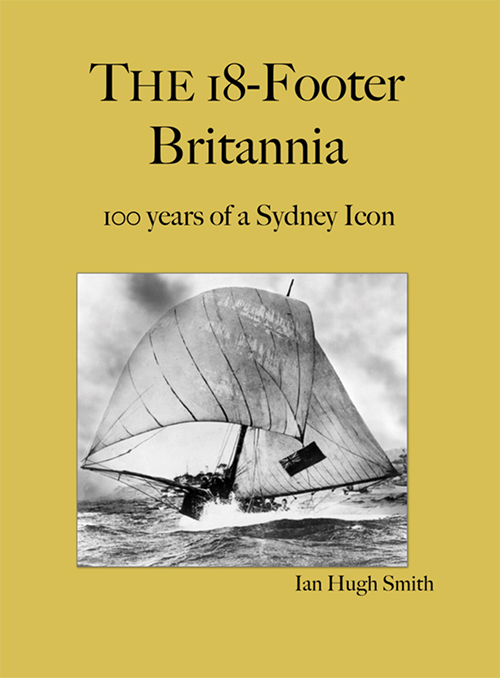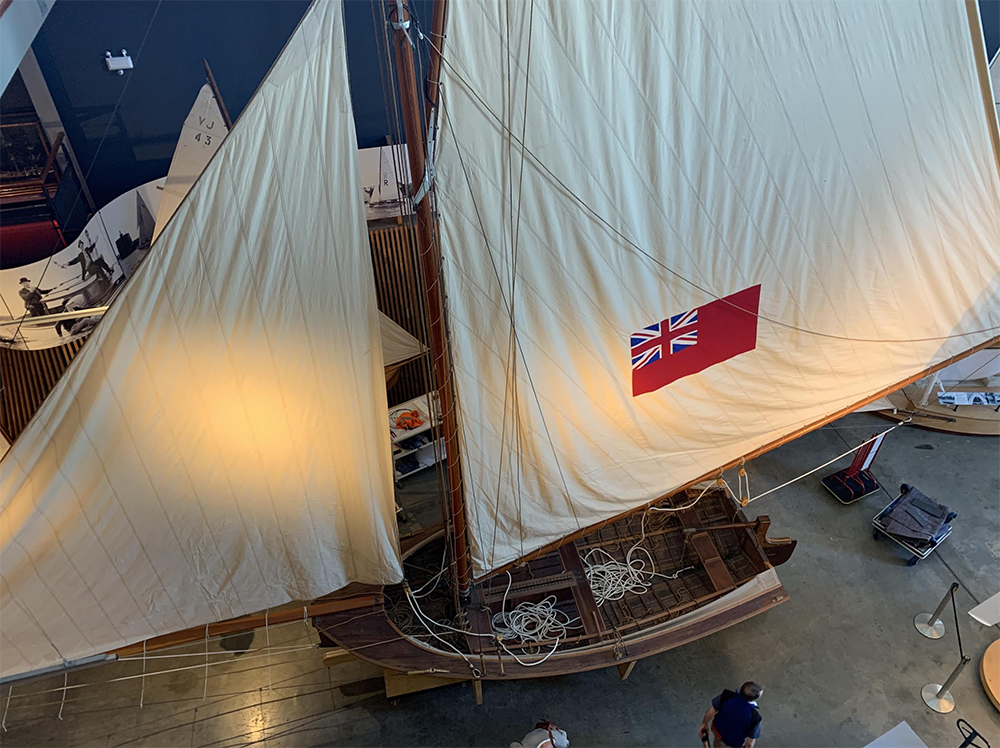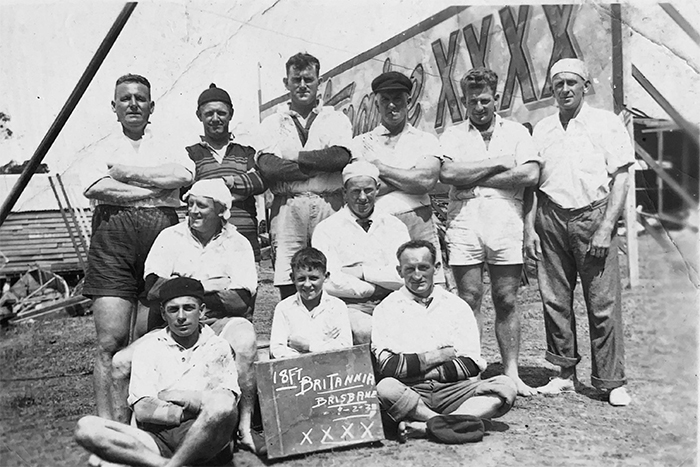Book Review: Britannia 100 years of a Sydney Icon

The 18-Footer Britannia
100 years of a Sydney Icon
By Ian Hugh Smith
RRP: $39.00 plus $15 postage and packaging
Available from the BOOKS page on www.openboat.com.au and off the shelf from Boat Books, Crows Nest.

Wee Georgie Robinson and his magnificent 18-footer Britannia hold especially honoured places in the pantheon of Australian sporting heroes. And if there’s anyone who doubts that assertion, they need look no further than Ian Hugh Smith’s carefully researched and beautifully illustrated new book on Britannia, an important volume that shines new light on the stuff of legend. Bruce Stannard needed no convincing.
While an exceptionally gifted individual might excel at one particular sporting endeavour, it is exceedingly rare for that same individual to, at the same time, reign as a champion in another quite disparate sporting arena and to remain competitive at the highest level over many years. The late “Wee Georgie” Robinson was just such a sporting prodigy. He was not only a gifted self-taught open boat designer, a superb boat builder and a champion racing skipper but was also one of the most talented half-backs ever to pull on the coveted black and gold jersey for the Balmain Tigers, playing the bone-crunching, give-no-quarter, running game of Rugby League. It was quite an achievement for a slim young man who weighed only eight stone (50 kilos) and stood just a whisker under five feet (1.52m) tall. Georgie was in fact the smallest First Grade player in the history of the game.
Georgie played in four Grand Finals and represented NSW and Australia. Between 1915 and 1928 he played 85 First Grade games, winning 51, losing 27 and drawing 7. He scored 24 tries and kicked 44 goals. Georgie had his nose broken so many times in bloody on-field shenanigans that his schnoz was eventually allowed to remain smashed and spread across his face like a lumpy dollop of putty. And yet, despite his scarred and battered visage, his twinkling bright blue eyes never lost their mischievous sparkle as he recalled those rough-house years, both on and off the water, with nothing but the warmest affection.

Many of Georgie’s Tiger team mates sailed with him aboard Britannia. And he certainly needed every one of them for live ballast. She carried a colossal cloud of canvas, around 3,000 square feet and therefore had to have 10 big, beefy Balmain footballers, triple-banked on her gunwales. And yet the boat was so beautifully balanced that Georgie could, and often did, leave the tiller and walk forward to check on the jib set on her curving 21ft bowsprit.
In the Introduction to his book, Ian Smith sets out the incredible statistical record of Britannia’s racing career. Built at Balmain East from a single log of North Coast red cedar in 1918-19, she competed in her first race with the Sydney Flying Squadron in November 1919. With her racing insignia, the distinctive Red Duster of the British Merchant Marine stitched to her mainsail, Britannia continued racing for 23 seasons over 25 years in which she took part in about 650 races. She won 40 of those races, including 14 Championships. After her racing career came to a close, Georgie installed a small petrol engine and converted her to a lovely little half-cabin launch. With her mast and boom cut down, she continued to serve for a further 25 years as the Squadron’s official Starter’s Boat.
In the 1980s, Georgie began a restoration that was still incomplete when he died in 1987. Arthur Griffiths, a highly skilled Cockatoo Island pattern-maker, took on the task and carefully set to work with a tiny three-cornered scraper. When the hull was acquired by the Australian National Maritime Museum in 1987, the Balmain shipwrights Rick Wood and Nigel Shannon took over and completed the restoration. Under the supervision of Museum Curator Michael Staples, she was re-rigged and given traditional cotton sails, beautifully hand-made made by Dennis McGoogan a master craftsman of the old school who learned his trade in the Harry West loft in Balmain.
Britannia has the distinction of being the first vessel to be acquired by the Australian National maritime Museum. Wearing her Number One light-air mainsail and jib, she made a spectacular sight on display in the Museum’s Tall Gallery. Later moved to the foyer of the Museum’s administrative wing, she is now regrettably off the public radar. One hopes that Ian Smith’s new book, which sheds so much light on her life, will now prompt the Museum to reinstate her where she belongs, front and centre as a key exhibit in our national maritime museum collection.


